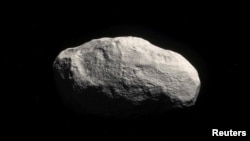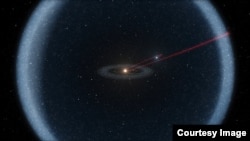Astronomers have spotted a piece of material likely dating from the formation of the solar system.
The object, called C/2014 S3 (PANSTARRS), is twice as far from the sun as Earth, with an orbital period of 860 years, which means it likely comes from the Oort Cloud, a band of icy objects in the outermost parts of the solar system.
Researchers writing in the journal Science Advances say the object is the first “to be discovered on a long-period cometary orbit that has the characteristics of a pristine inner solar system asteroid” and may yield data on the earliest years of our planetary system.
"We already knew of many asteroids, but they have all been baked by billions of years near the sun,” said lead author Karen Meech of the University of Hawaii Institute for Astronomy. "This one is the first uncooked asteroid we have found: it has been preserved in the best freezer there is."
One of the first clues that the object was unusual was that it lacked the tail seen in most comets as they approach the sun. This prompted researchers to nickname it a “Manx” comet, referring to tailless cats.
A study of light reflected by C/2014 S3 ((PANSTARRS)) indicated to researchers that it is made up of “fresh inner solar system” material, which has been hanging out in the Oort Cloud and is “now returning to its birthplace.”
Further discoveries of tailless comets could help researchers refine models of how our solar system formed.
Here's a video about the discovery:










